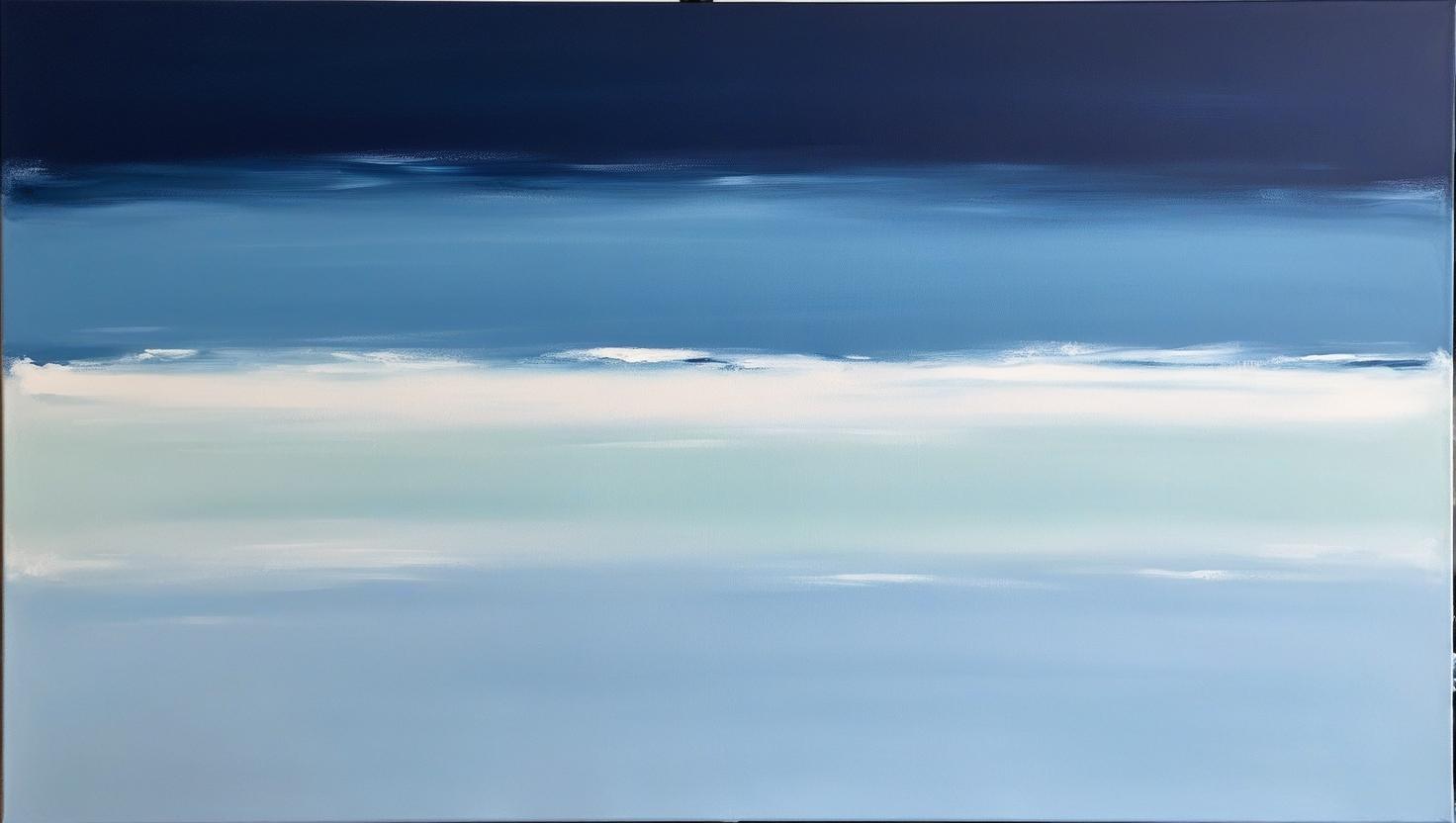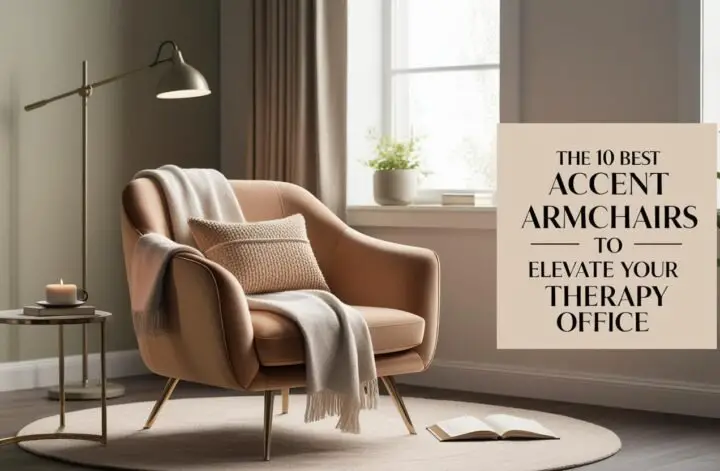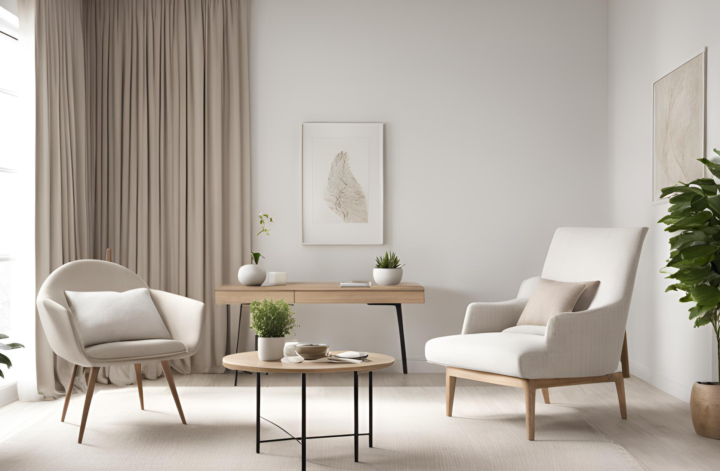When you step into a therapy room, the surroundings are more than just physical space—they play a psychological role in shaping your emotional and mental experience. One powerful element that affects mood is wall art. From soothing blues to energizing yellows, the right visuals can make a significant difference in how clients feel during their sessions. But this isn’t just a matter of personal taste—scientific research supports the idea that colors, shapes, and imagery in art can influence emotional states.
Let’s dive into the science behind why certain colors and shapes work best in therapeutic settings and how you can use this knowledge to create a supportive, calming environment.
This article contains affiliate links. If you make a purchase through these links, I may earn a small commission at no extra cost to you. Your support helps me keep creating helpful content. Thank you for supporting eveyou.eu!
The Science of Color and Mood
Colors have long been studied for their psychological effects. Here’s a breakdown of why certain colors work well in therapy rooms and how they influence mood:
Blues
- Why it works: Blue is known for its calming and relaxing effects. Studies show that the color blue can reduce heart rate and lower blood pressure, which makes it ideal for anxious or stressed clients. It’s a color that invokes tranquility, much like a peaceful sky or calm ocean.
- Scientific backing: According to a study published in the Journal of Affective Disorders, exposure to blue light has been shown to reduce anxiety levels and improve emotional stability.
Picture This: Imagine a large canvas with soft, gradient blues transitioning from deep navy at the top to light sky blue at the bottom, evoking a calm sky or ocean. The atmosphere feels serene and peaceful, inviting relaxation and tranquility.
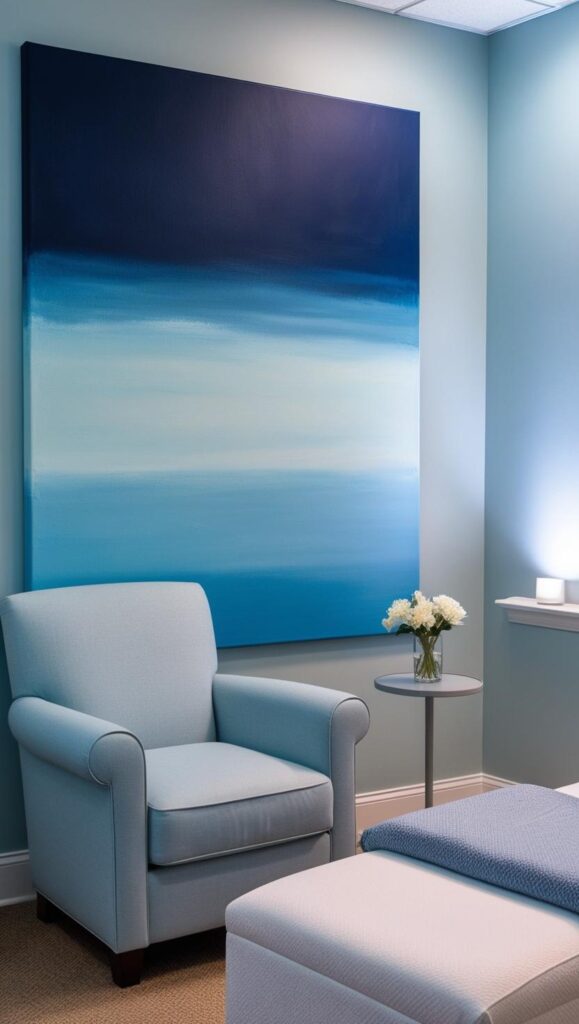
Greens
- Why it works: Green, particularly shades of nature, evokes feelings of peace, growth, and renewal. Nature’s calming influence is often tied to the color green, making it a go-to for creating a grounded, restorative atmosphere.
- Scientific backing: Research from the International Journal of Environmental Research and Public Health found that green environments have a calming effect on mental health, lowering stress and enhancing recovery.
Picture This: Visualize a therapy room with walls painted in a soft, natural green, accompanied by an image of a flourishing forest or grassy field. The colors create a sense of peace, evoking feelings of growth and renewal, making the space feel grounded and restorative.
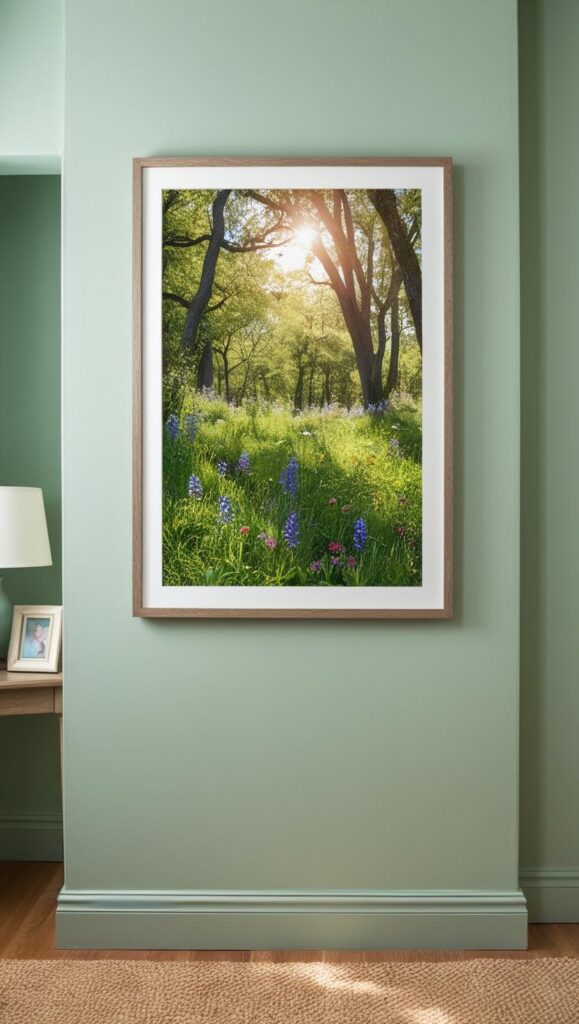
Yellows
- Why it works: Yellow is often associated with positivity, energy, and warmth. It stimulates the mind and can promote optimism, making it effective in spaces where motivation and encouragement are needed.
- Scientific backing: Studies show that yellow increases serotonin levels, which is linked to improved mood and feelings of happiness. A 2018 study in Color Research and Application found that yellow has a positive impact on emotional well-being, particularly when used in moderation.
Picture This: Picture a bold, bright yellow wall with abstract, uplifting shapes or patterns, such as sunrays or playful geometric designs. The bright yellow hue inspires energy and positivity, bringing an optimistic vibe into the room.
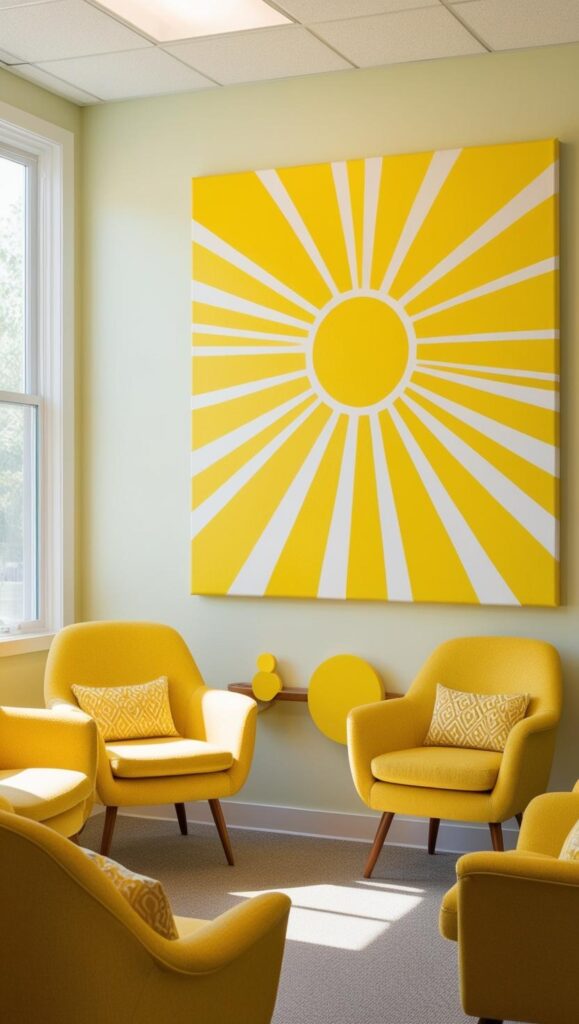
Oranges
- Why it works: Orange is a stimulating, energizing color that combines the warmth of red with the cheerfulness of yellow. It’s a great color to inspire enthusiasm, creativity, and positivity.
- Scientific backing: Research by the American Psychological Association has shown that orange can promote feelings of social warmth and excitement, making it ideal for spaces where empowerment and motivation are key.
Picture This: Visualize an abstract art piece with warm, fiery orange swirls and bright accents. The piece is placed on a neutral wall, providing a feeling of warmth, energy, and inspiration. This combination stirs enthusiasm and a sense of action.
Neutrals (Beiges, Grays, Whites)
- Why it works: Neutral tones provide balance, grounding, and clarity without overwhelming the senses. These colors help create a space that feels open and non-distracting, promoting calmness and relaxation.
- Scientific backing: Neutral colors are often recommended for spaces meant to promote focus and mental clarity. According to Color Psychology by Angela Wright, neutral tones are ideal for encouraging thoughtful reflection without creating emotional extremes.
Picture This: Envision a peaceful therapy room with soft beige walls, accented by clean white frames and delicate gray furniture. The space feels simple, uncluttered, and calming—creating an open and safe environment for clients to relax and focus.
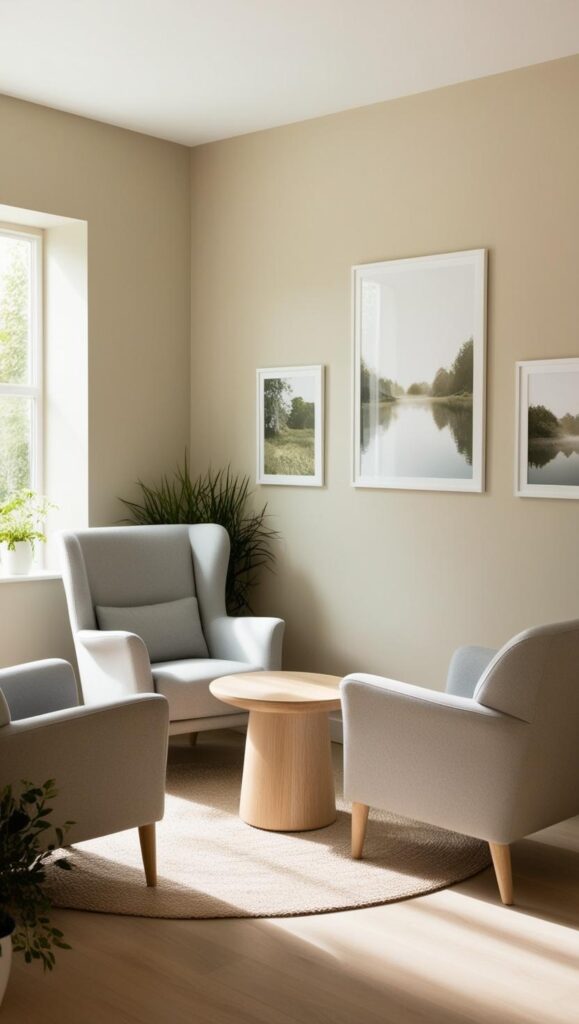
The Power of Shapes and Forms
Alongside color, shapes and forms in art play an important role in shaping emotional responses. Here’s how different shapes can affect mood:
Curved Shapes
- Why it works: Rounded, flowing shapes are often perceived as soothing and non-threatening. They create a sense of harmony and safety, making them ideal for therapy rooms where clients need to feel at ease.
- Scientific backing: Research from the Journal of Experimental Psychology suggests that curved shapes promote feelings of comfort and relaxation. People tend to associate curved lines with calmness and safety, while sharp angles are often linked to aggression and tension.
Picture This: Picture a large abstract painting with smooth, sweeping curves and soft transitions of color. The artwork radiates a sense of calm and peacefulness, creating a safe and soothing environment for clients.
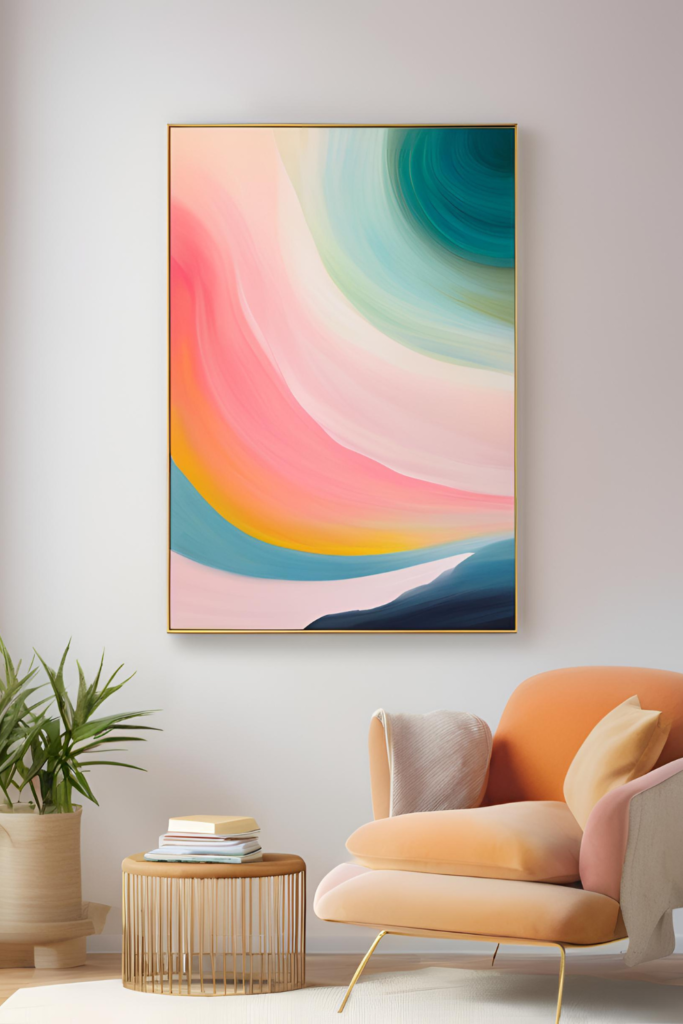
Geometric or Angular Shapes
- Why it works: While angular shapes can create a sense of order and structure, they may also elicit feelings of discomfort if overused. However, in a therapy setting, angular art used sparingly can convey empowerment and clarity, especially in motivational pieces.
- Scientific backing: A study in Psychological Science suggests that geometric shapes evoke a sense of stability and control. However, sharp and erratic angles can trigger a stress response, which is why balance is key when incorporating these designs.
Picture This: Imagine a minimalist design featuring sharp, angular lines in muted colors, perhaps in the form of a modern, geometric piece. The structured patterns evoke feelings of stability and control, making it perfect for motivating clients seeking focus and empowerment.
Natural Imagery (Nature, Organic Forms)
- Why it works: Nature-inspired art (trees, flowers, water) has a universal calming effect. Organic, flowing forms evoke a connection to the earth, and studies show they can lower anxiety and improve mood.
- Scientific backing: According to a study published in Landscape and Urban Planning, natural imagery in interior spaces can reduce stress and promote healing. Being in an environment with nature-like visuals enhances recovery and helps clients feel more centered.
Picture This: Visualize a large mural depicting a serene forest scene with soft green foliage, tranquil water, and gentle, natural curves. This natural imagery evokes a sense of peace and connection, inviting calmness and lowering stress.
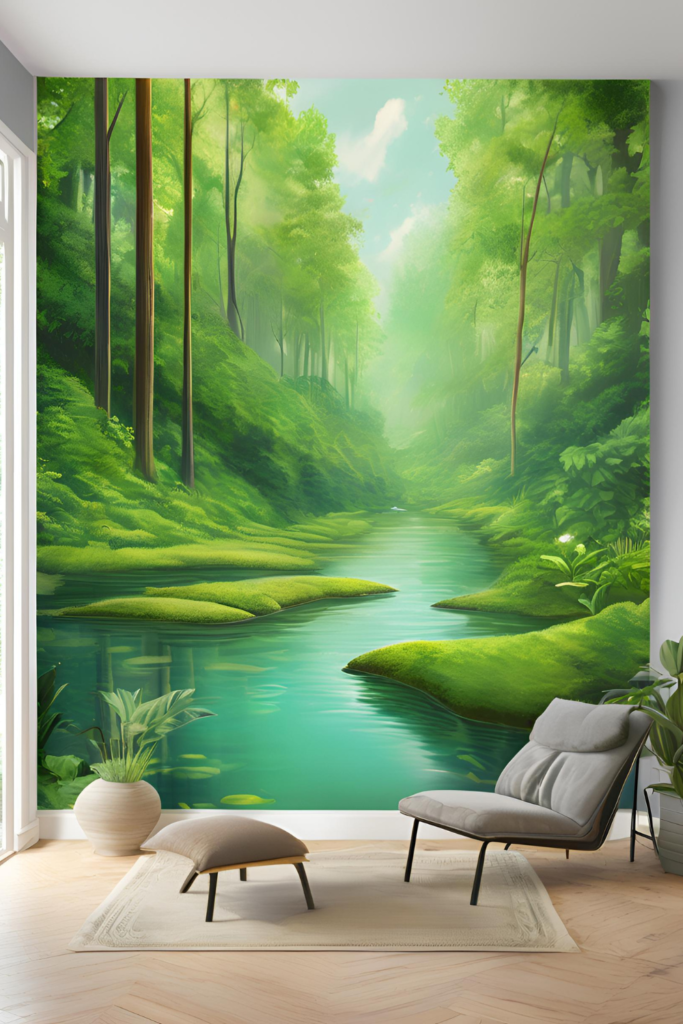
Wrapping Up
Therapeutic wall art isn’t just about making a room look aesthetically pleasing—it’s a powerful tool in influencing client mood, emotional well-being, and even the therapeutic process. By selecting the right colors and shapes, you can create a space that calms, motivates, and supports healing.
Whether it’s soothing blues for stress relief or energetic oranges for motivation, every piece of art in your therapy room plays a part in creating a welcoming, positive environment. Understanding the science behind these choices ensures that your therapy space is not only visually appealing but also psychologically beneficial.
So, the next time you’re selecting artwork for your space, consider how it might make your clients feel—and choose with intention.
